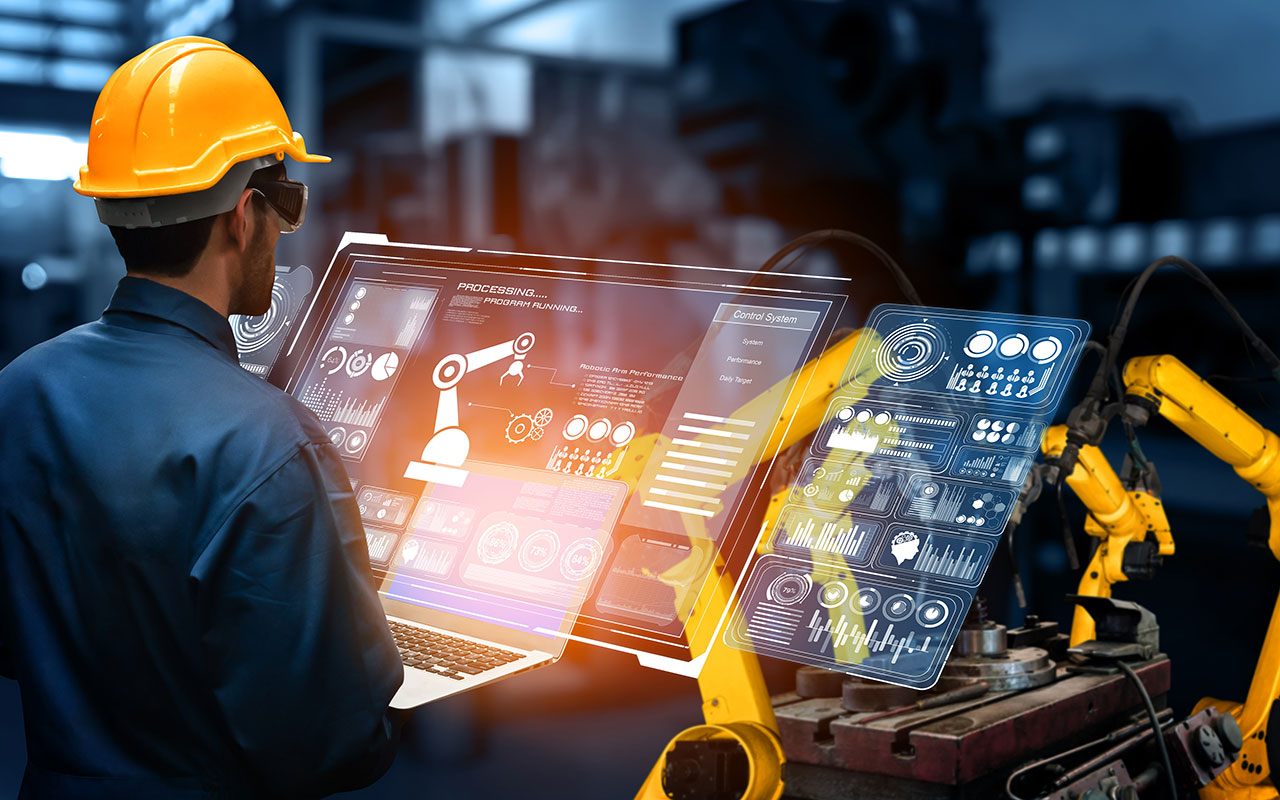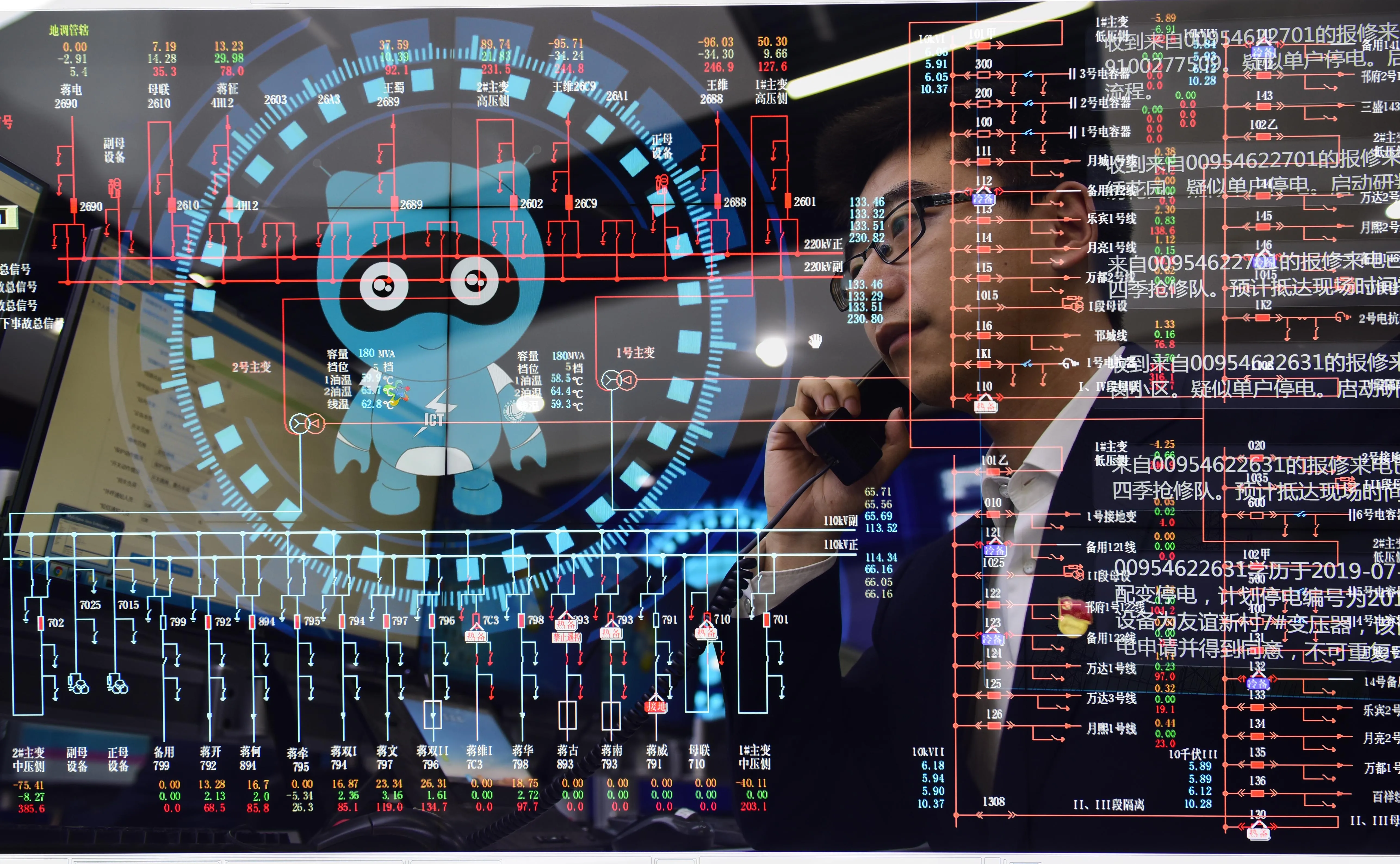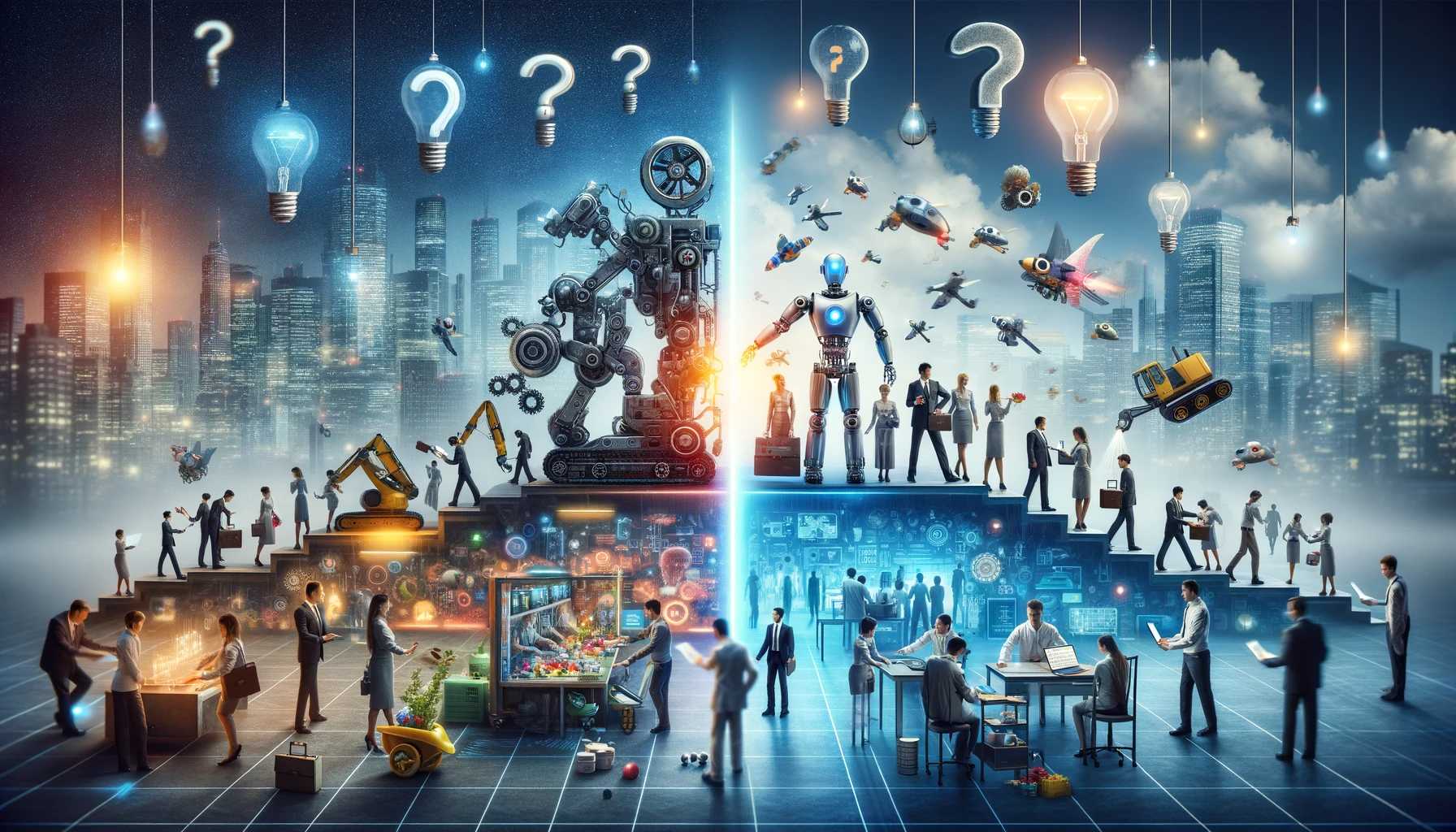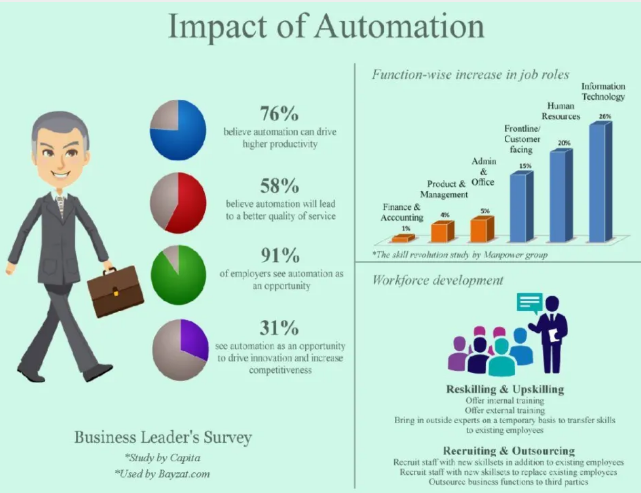Automation significantly impacts employment by reducing the need for manual labor and creating new technology-focused jobs. This shift demands workers to adapt and acquire new skills.
Automation has become a pivotal force in shaping the modern workforce. Machines and software are taking over repetitive tasks, leading to job displacement in some sectors. Workers now face the challenge of upskilling to stay relevant in an evolving job market.
Jobs in technology, data analysis, and AI development are on the rise, offering new opportunities. Businesses benefit from increased efficiency and lower operational costs. Understanding the balance between job loss and job creation is crucial for navigating the future of work. Automation is not just a trend; it is redefining employment landscapes globally.
Rise Of Automation
The rise of automation is changing the world of work. Machines and software now do many tasks humans once did. This shift affects jobs across many industries.
Historical Context
Automation is not new. In the 1800s, the Industrial Revolution began. Machines started to replace manual labor in factories. The Luddite movement of 1811-1816 saw workers destroy machines fearing job loss.
In the 20th century, computers and robots entered workplaces. These new technologies boosted productivity. Yet, they also reduced the number of some jobs.
Current Trends
Today, artificial intelligence (AI) and machine learning lead automation advances. These technologies handle complex tasks like data analysis and customer service. Self-driving cars and robotic process automation are now common.
Many industries use automation to improve efficiency. Manufacturing, healthcare, and finance are just a few examples. This trend is growing fast.
Job displacement is a concern. Some roles are disappearing. New types of jobs are also emerging. Digital skills are now essential for many workers.
Job Displacement
The rise of automation is changing the job market. Many jobs are at risk. Automation can do tasks faster and cheaper. This shift leads to job displacement. Workers lose jobs to machines and software. Let’s explore which industries and jobs are most affected.
Industries Most Affected
Some industries feel the impact of automation more than others. Here are the most affected sectors:
| Industry | Impact Level |
|---|---|
| Manufacturing | High |
| Retail | Medium |
| Transportation | High |
| Customer Service | Medium |
Manufacturing and transportation face high job displacement. Robots and self-driving vehicles replace human workers. Retail and customer service also see changes. Automated checkout and chatbots reduce the need for employees.
Types Of Jobs At Risk
Not all jobs are equally at risk. Some roles are more vulnerable to automation. Here are the job types most likely to be displaced:
- Repetitive tasks
- Data entry
- Assembly line work
- Driving jobs
- Basic customer service
Repetitive tasks are easy to automate. Machines handle data entry without errors. Assembly line work is perfect for robots. Driving jobs face competition from self-driving cars. Basic customer service can be done by chatbots. Workers in these roles should consider upskilling.
Economic Implications
Automation is changing the way we work. It affects jobs and the economy. Understanding these economic implications helps us prepare for the future.
Productivity Gains
Automation improves productivity. Machines do tasks faster and more accurately than humans. This leads to higher output with less effort. Companies produce more goods in less time.
Increased productivity boosts economic growth. Businesses save money on labor costs. They can invest in new technologies and hire skilled workers. This creates new job opportunities in tech and engineering.
| Factor | Impact |
|---|---|
| Speed | Faster task completion |
| Accuracy | Fewer errors |
| Cost | Lower labor expenses |
Income Inequality
Automation can widen income inequality. Low-skill jobs are at risk. Machines can replace these roles easily. Workers in these jobs may struggle to find new employment.
High-skill jobs benefit from automation. Skilled workers are in demand. They earn higher wages. This creates a gap between high and low earners.
- Low-skill workers face job loss
- High-skill workers earn more
- Income gap increases
Policies can help address income inequality. Education and training programs prepare workers for new roles. Government support can ease the transition for displaced workers.
Automation impacts the economy in many ways. While it boosts productivity, it also creates challenges like income inequality. Understanding these effects helps us navigate the future of work.

Credit: equitablegrowth.org
Skill Shifts
Automation changes the job market. Workers need new skills to stay relevant. This shift impacts many industries and roles. Let’s explore this transformation.
Demand For New Skills
Automation creates demand for new skills. Workers need to adapt to these changes. Here are some skills in high demand:
- Technical Skills: Coding, data analysis, and machine learning.
- Soft Skills: Critical thinking, creativity, and problem-solving.
- Digital Literacy: Understanding digital tools and platforms.
Reskilling And Upskilling
Reskilling and upskilling help workers stay competitive. Companies invest in training programs. This helps workers gain new abilities.
Reskilling means learning new skills for a different job. Upskilling means improving skills for the current job. Both are crucial for adapting to automation.
| Skill Type | Examples |
|---|---|
| Technical Skills | Programming, AI, data science |
| Soft Skills | Teamwork, leadership, communication |
| Digital Literacy | Using software, understanding online security |
Workers need to focus on continuous learning. This ensures they stay relevant in a changing job market. Investing in new skills is essential for success.
Social Consequences
The rise of automation brings significant social consequences. These changes affect various aspects of our society. From workforce demographics to mental health, automation’s impact is broad and deep.
Changes In Workforce Demographics
Automation shifts the structure of the workforce. Older workers may find it harder to adapt. Younger workers might embrace new technology quickly.
- Skilled workers are in high demand.
- Unskilled workers might lose their jobs.
- Job training programs become essential.
Women and minorities may face unique challenges. Access to technology and training can be limited. This could widen the existing socio-economic gap.
Psychological Impact
Automation affects mental health. Job loss leads to stress and anxiety. Workers fear their skills may become obsolete.
Job security is a significant concern. People worry about their future roles. This uncertainty can cause long-term stress.
Work satisfaction might decrease. Automation can make work feel less personal. Workers might miss human interaction.
| Impact | Description |
|---|---|
| Stress | Fear of losing jobs |
| Anxiety | Uncertainty about future roles |
| Reduced Satisfaction | Lack of human interaction |
Support systems are crucial. Counseling and mental health services can help. Proper support can mitigate the negative effects.

Credit: www.brookings.edu
Policy Responses
Automation transforms industries and affects employment. Effective policy responses are essential. They aim to balance technological advancement and job security.
Government Initiatives
Governments worldwide introduce policies to address automation’s impact on jobs. These initiatives aim to support workers and promote fair transitions.
| Country | Initiative | Goal |
|---|---|---|
| USA | Job Training Programs | Reskill workers for new industries |
| Germany | Digital Education | Equip students with tech skills |
| Japan | Automation Tax | Fund worker support systems |
Corporate Strategies
Companies implement strategies to manage automation’s impact on their workforce. They aim to balance innovation with employee well-being.
- Reskilling Programs: Companies invest in training employees for new roles.
- Job Sharing: Employees share tasks to reduce job losses.
- Flexible Work Hours: Employees benefit from adaptable schedules.
These strategies help in retaining talent and improving productivity. They also foster a culture of continuous learning and adaptability.
Future Of Work
The future of work is changing rapidly. Automation is transforming jobs. What will work look like soon?
Hybrid Job Models
Hybrid job models are becoming more common. These models mix human skills with machine efficiency.
Workers will collaborate with machines. This will create new job roles. Below is a simple comparison:
| Traditional Jobs | Hybrid Jobs |
|---|---|
| Manual tasks | Automated tasks |
| Fixed roles | Flexible roles |
| Human-only tasks | Human-machine tasks |
- Hybrid jobs need new skills.
- Workers must adapt to changing roles.
- Companies need training programs.
Long-term Predictions
Long-term predictions show more changes in the job market. Some jobs may disappear. New jobs will emerge. Here are some key points:
- Many routine jobs will be automated.
- Creative jobs will still need humans.
- New industries will create new job opportunities.
Adapting to these changes is crucial. Lifelong learning will be important. Workers must keep updating their skills.

Credit: www.mycvcreator.com
Global Perspectives
The impact of automation on employment varies worldwide. Different countries experience unique challenges and benefits. Developed and developing nations show contrasting trends. Case studies highlight these differences.
Developed Vs Developing Countries
In developed countries, automation often leads to higher efficiency. Machines replace repetitive tasks. Workers shift to more complex roles. This transition requires new skills and training. Many employees face temporary job losses.
In contrast, developing countries encounter different issues. Automation can threaten traditional jobs. These economies rely on manual labor. The shift to machines can displace many workers. Job creation may not keep pace with job loss.
| Aspect | Developed Countries | Developing Countries |
|---|---|---|
| Efficiency | High | Moderate |
| Job Displacement | Temporary | Long-term |
| Skill Requirement | Advanced | Basic to Moderate |
Case Studies
Examining specific countries provides deeper insights. Japan, a developed nation, showcases successful automation. Robots handle many manufacturing tasks. Workers move to design and maintenance roles.
In India, a developing country, the story is different. Automation in agriculture displaces many farmers. Job loss exceeds job creation. The economy struggles to adapt.
- Japan: High automation, job transition to advanced roles.
- India: Automation leads to job displacement in agriculture.
These case studies highlight the varied impact. Automation benefits and challenges depend on the country’s development stage.
Conclusion
Automation is transforming employment landscapes. It presents both challenges and opportunities. Workers must adapt to new technologies. Upskilling and reskilling are essential for job security. Embracing automation can drive productivity and innovation. Balancing automation with human expertise will shape the future workforce.
Stay informed and proactive to thrive in this evolving job market.

